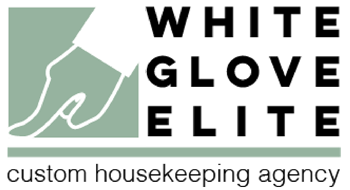House Cleaning in the era of COVID
White Glove Elite has provided housekeepers to New York City households and businesses since 1992. The Covid-19 infectious disease has raised many questions and concerns regarding best practices to maintain a clean home, proper disinfection techniques, and what products are best suited.
The Centers for Disease Control and Prevention (CDC) has produced numerous guidelines and recommendations addressing these concerns, however the information is spread between multiple sources – so White Glove Elite has created this blog to simplify and consolidate the relevant information in one place. Providing the knowledge necessary for maintaining a clean home, while also prioritizing safety and sanitation, is the primary goal of this article.
*WGE Editor’s Note*: Of course the easiest way to clean your home is to hire someone else to do it for you. 😉 If that is your inclination, skip to the last section on a few important safety tips when hiring a cleaner.
Jump to Section:
Before You Clean – Safety Considerations
General Cleaning and Disinfecting Guidelines
Cleaning Hard (Non-Porous) Surfaces
Cleaning Soft (Porous) Surfaces
Recommended Cleaning and Disinfecting Products
Before You Clean: Safety Considerations
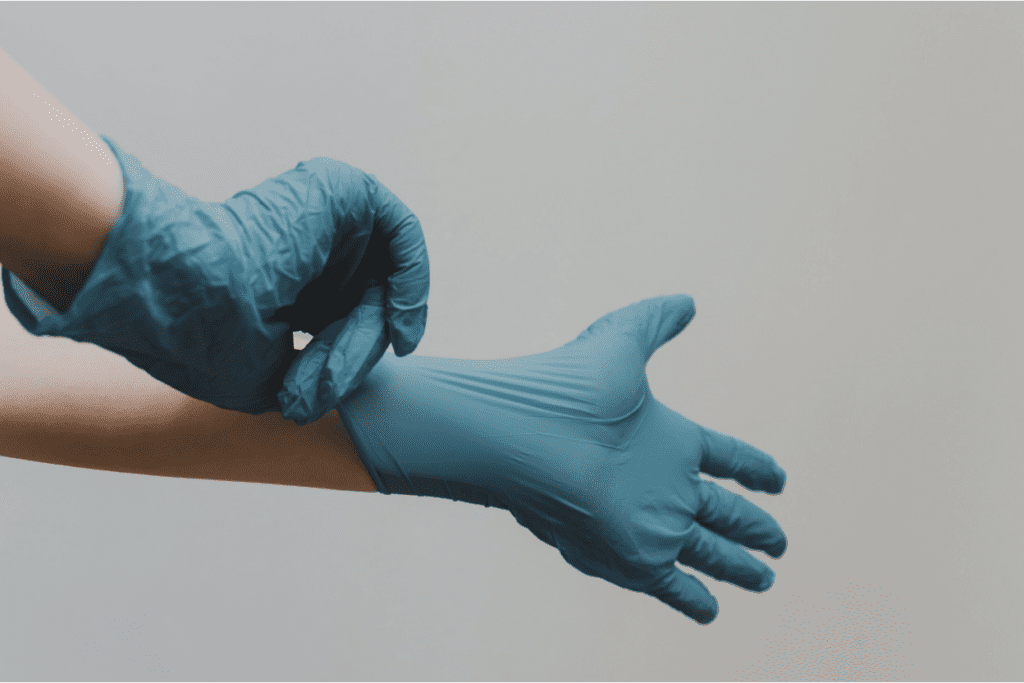
When doing the cleaning yourself, wear reusable or disposable gloves for routine cleaning and disinfection. Disposable Gloves should be discarded after each cleaning. If reusable gloves are used, those gloves should be dedicated for cleaning and disinfection of surfaces for COVID-19 and should not be used for other purposes. Clean hands immediately after gloves are removed.
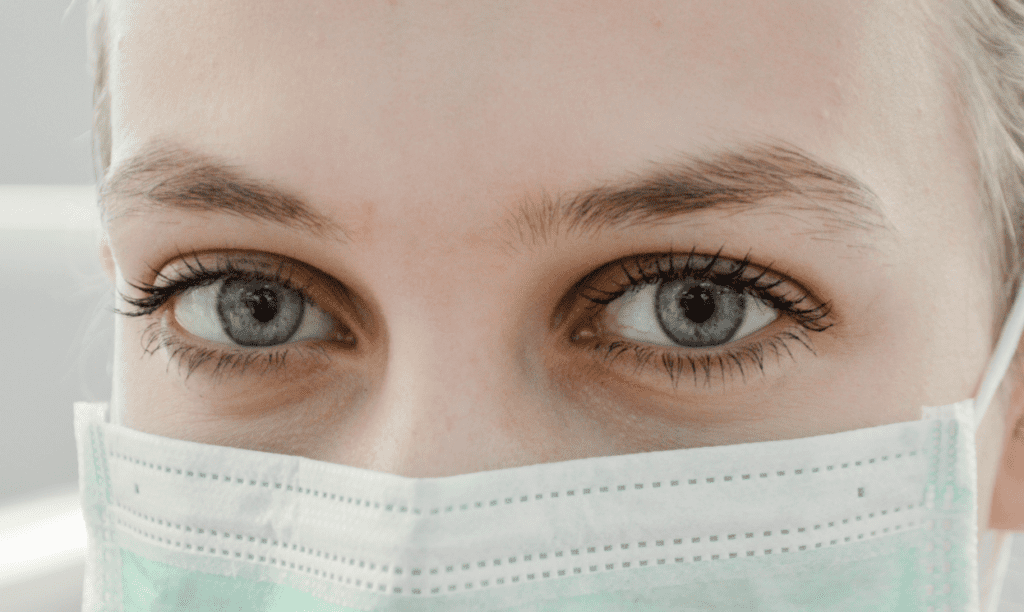
Wear facial coverings and follow proper prevention hygiene, such as washing your hands frequently for at least 20 seconds and using alcohol-based (at least 60% alcohol) hand sanitizer when soap and water are not available.
Additional key times to clean hands include:
- After blowing one’s nose, coughing, or sneezing
- After using the restroom
- Before eating or preparing food
- After contact with animals or pets
- Before and after providing routine care for another person who needs assistance (e.g. a child)
General Cleaning and Disinfecting Guidelines
Normal routine cleaning with soap and water will decrease how much of the virus is on surfaces and objects, which reduces the risk of exposure. Coronaviruses on surfaces and objects naturally die within hours to days. Warmer temperatures and exposure to sunlight will reduce the time the virus survives on surfaces and objects.
Disinfection using EPA-approved disinfectants against COVID-19 can also help reduce the risk. Frequent disinfection of surfaces and objects touched by multiple people is important.
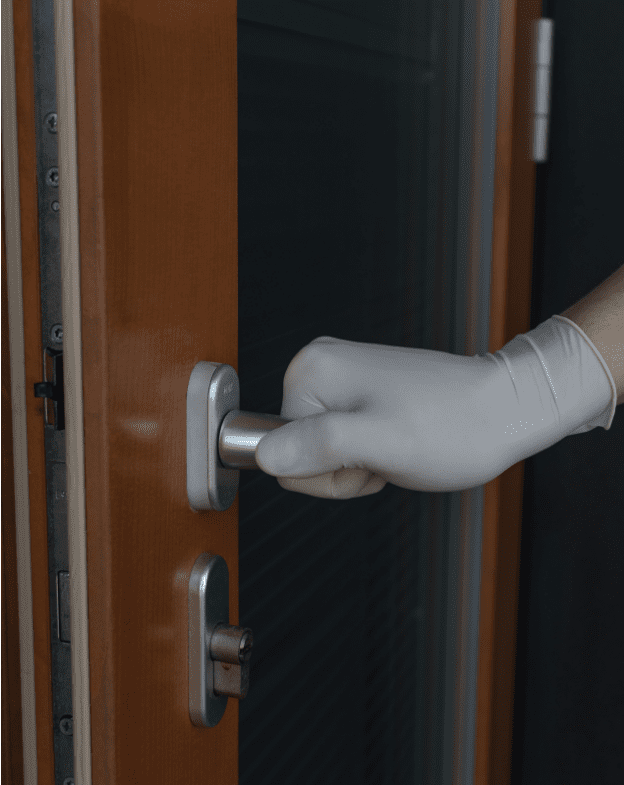
High touch surfaces to disinfect include: Tables, hard-back chairs, doorknobs, light switches, countertops, handles, desks, phones, tablets, touch screens, remote controls, keyboards, toilets, faucets, sinks, etc.
The virus that causes COVID-19 can be killed if you use the right products. EPA has compiled a list of disinfectant products that can be used against COVID-19, including ready-to-use sprays, concentrates, and wipes. Each product has been shown to be effective against viruses that are harder to kill than viruses like the one that causes COVID-19.
When EPA approved disinfectants are not available, alternative disinfectants can be used.
For example:
- 1/3 cup of bleach added to 1 gallon of water
- hydrogen peroxide
- 70% alcohol solutions. *WGE Editor’s Note*: this is higher than the minimum 60% solution recommended for hand sanitizing.
Do not mix bleach or other cleaning and disinfection products together. This can cause fumes that may be very dangerous to breathe in.
Cleaning Hard (Non-Porous) Surfaces
If hard surfaces are dirty, they should be cleaned using a detergent or soap and water prior to disinfection.
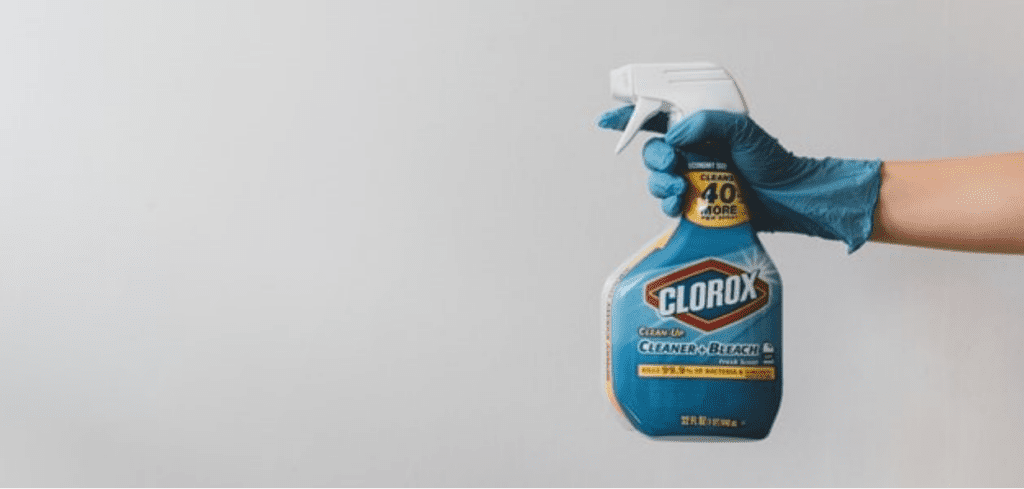
For disinfection, most common EPA-registered household disinfectants should be effective. Keep surfaces wet for a period of time for adequate disinfection (see product label – often 5 to 10 minutes)
Take Precautions such as wearing gloves and making sure you have good ventilation during use of the product.
Cleaning Soft (Porous) Surfaces
For soft surfaces such as carpeted floor, rugs, and drapes.
Clean the surface using soap and water or with cleaners appropriate for use on these surfaces.
Launder items (if possible) according to the manufacturer’s instructions. Use the warmest appropriate water setting and dry items completely.
Soft Surfaces may also be disinfected with an EPA-registered household disinfectant, if appropriate.
Vacuum as usual.
Laundry
For clothing, towels, linens and other items.
Launder items according to the manufacturer’s instructions. Use the warmest appropriate water setting and dry items completely.
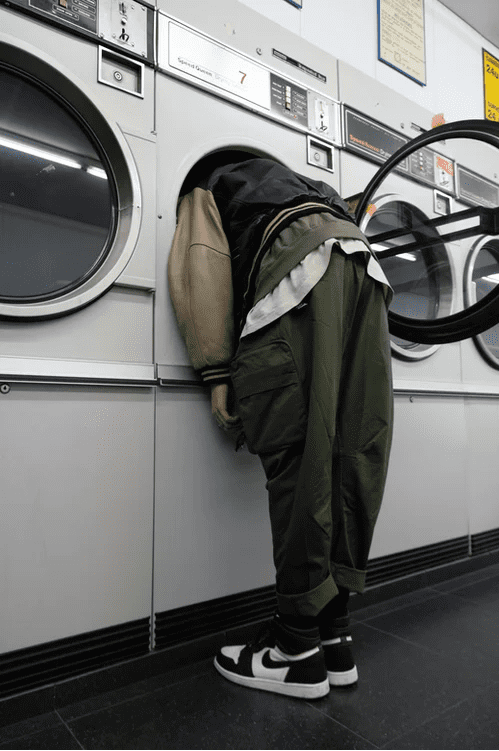
*WGE Editor’s Note*: Regardless of how much quarantines, shutdowns and joblessness have got you down, DO NOT stick your head in the dryer.
Wear disposable gloves when handling dirty laundry from a person who is sick.
Dirty laundry from a person who is sick can be washed with other people’s items.
Do not shake dirty laundry. This will minimize the possibility of dispersing virus through the air.
Clean and disinfect clothes hampers according to guidance above for surfaces. If possible, consider placing a bag liner that is either disposable (can be thrown away) or can be laundered.
Cleaning Electronics
For electronics such as cell phones, tablets, touch screens, remote controls, and keyboards, remove visible contamination if present.
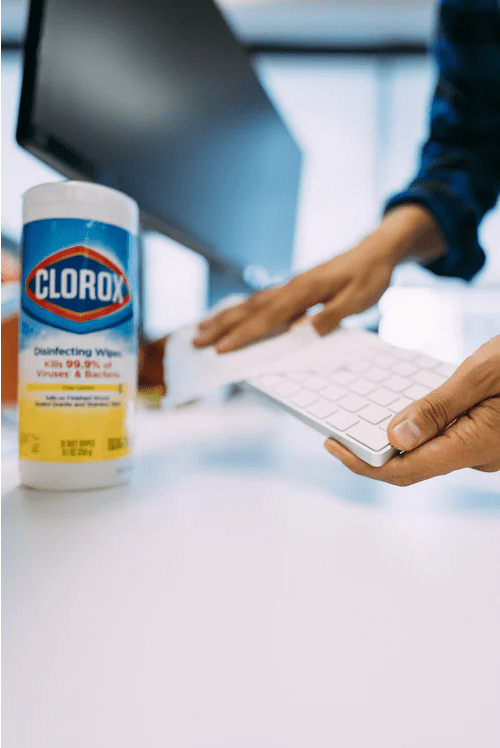
Consider the use of alcohol-based wipes or sprays containing at least 70% alcohol to disinfect touch screens. Dry surfaces thoroughly to avoid pooling of liquids.
The efficacy of alternative disinfection methods, such as ultrasonic waves, high intensity UV radiation, and LED blue light against COVID-19 virus is not known. Therefore, EPA cannot confirm whether, or under what circumstances, such products might be effective against the spread of COVID-19.
Recommended Cleaning and Disinfecting Products
The CDC has provided an exhaustive list of EPA approved disinfectant products for use against viral pathogens and the Coronavirus.
WGE recommends the use of the following:
| Product | Kill Time |
| WIPES | |
| Clorox Disinfecting Wipes | 4 minutes |
| Lysol® Disinfecting Wipes | 10 minutes |
|
|
|
| MULTI-SURFACE | |
| Clorox Clean Up Cleaner + Bleach | 1 minute |
| Fantastik® Multi-Surface Disinfectant Degreaser | 5 minutes |
| Windex Disinfectant Cleaner | 5 minutes |
| Lysol® Brand All Purpose Cleaner | 2 minutes |
|
|
|
| GLASS | |
| Peroxide Disinfectant And Glass Cleaner RTU | 45 seconds |
|
|
|
| BATHROOM | |
| Lysol® Brand Bleach Mold And Mildew Remover | 30 seconds |
| Lysol® Bathroom Cleaner | 5 minutes |
| Clorox Disinfecting Bathroom Cleaner | 10 minutes |
| Lysol® Brand Cling & Fresh Toilet Bowl Cleaner | 30 seconds |
| Clorox Toilet Bowl Cleaner with Bleach | 10 minutes |
|
|
|
| SCOURING | |
| Soft Scrub with Bleach | 3 minutes |
|
|
|
| AIR | |
| Lysol® Brand Deodorizing Disinfectant | 10 minutes |
White Glove Elite cleaners do not travel with cleaning supplies or equipment, and will make use of the cleaning products you make available, so please ensure you have the recommended products.
Additional CDC Resources
The above information is largely culled from the following official resources. More information about cleaning and disinfecting your home can be found here:
Cleaning and Disinfection for Households
Cleaning And Disinfecting Your Home
Household Cleaning & Sanitizing
List N: Disinfectants for Use Against SARS-CoV-2 (COVID-19)
Tips for Hiring a Cleaner
Perhaps the most challenging and important safety precaution when hiring a cleaner is to exercise social distancing. Here are a few tips:
- Wear a mask while sharing your home with your cleaner.
- Try to schedule your cleaner at a time when you will not be there or a time when you can show them in and leave.
- If #2 is not practical, try to schedule errands to run to get you out of your home while your cleaner is working.
- If #2 and #3 are not practical, coordinate time and space with your cleaner so that they are not cleaning in the same room you are occupying. Ventilate rooms as much as possible (windows and fans) and close doors between you and your cleaner whenever possible. Remember to close doors gently and save the slamming for any housemate(s) you may have. 😉
- Refer to above section on Recommended Cleaning and Disinfecting Products so that you can set your cleaner up with proper products.
- Wipe down with disinfectant any shared equipment (such as your vacuum) before your cleaner arrives and again after they leave. Or better yet, ask them to put it away and don’t touch any such equipment until their return. 😉
- Tip your cleaner well 😉
Should you need a good cleaner for your home, some of the most excellent cleaners in the city work with us. Call us at 212-684-4460 or click here to book service online.
